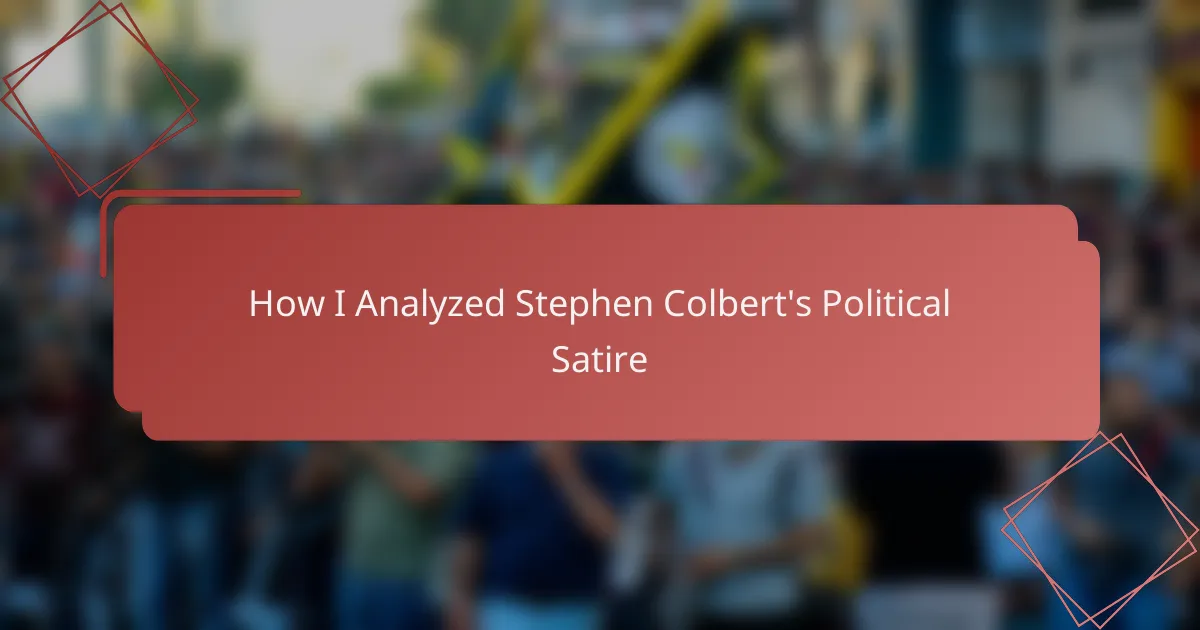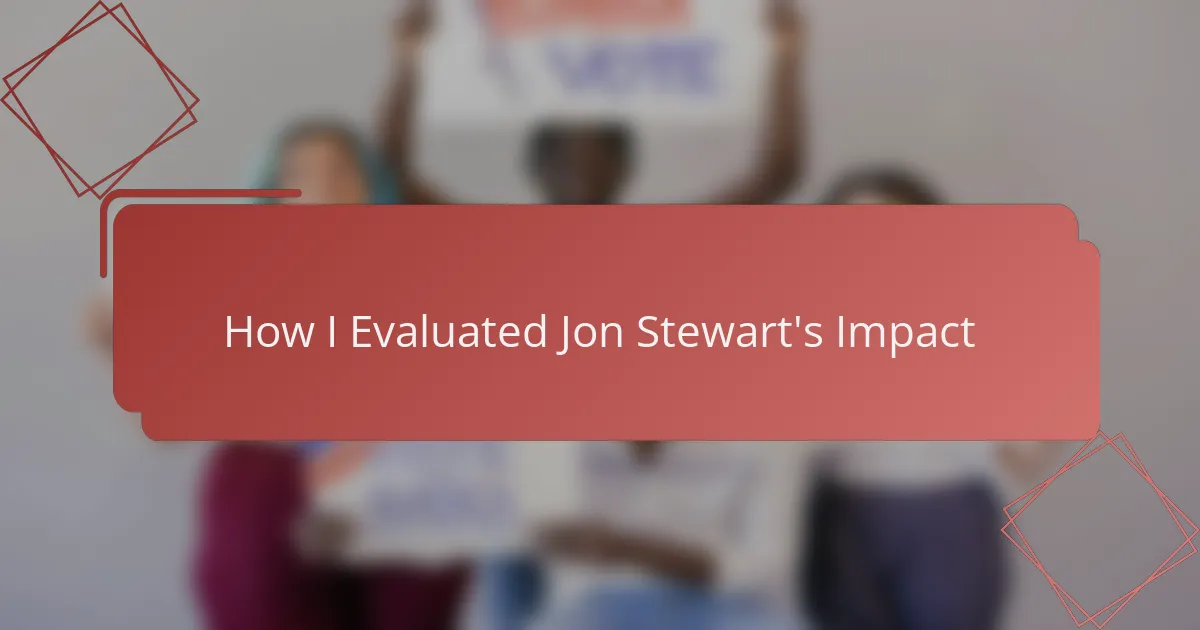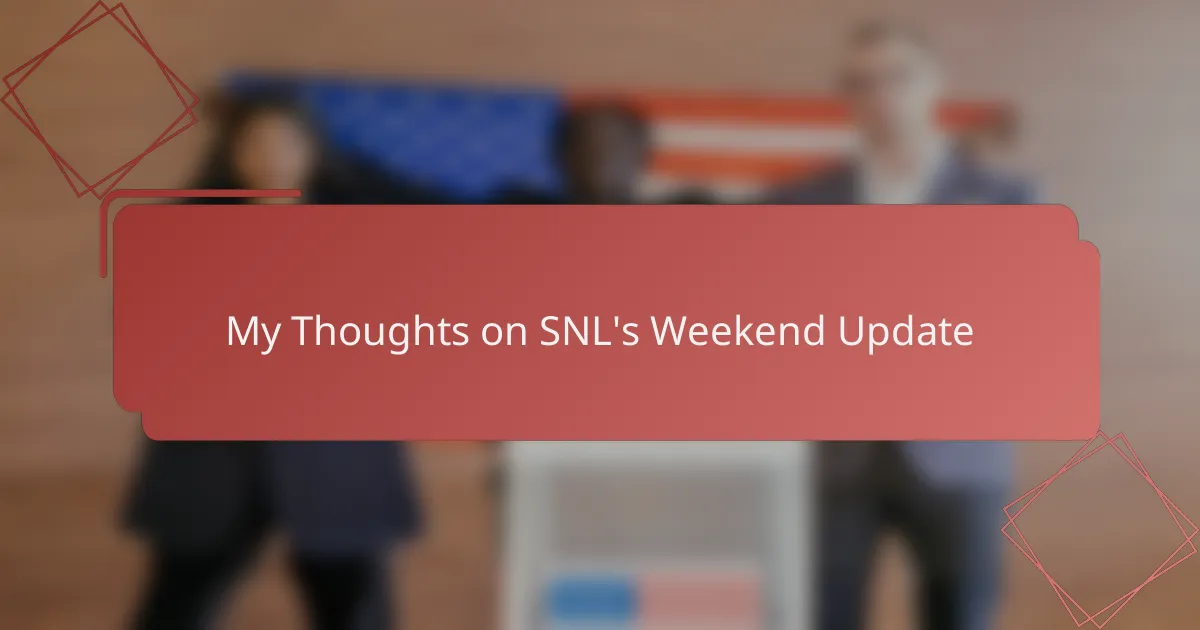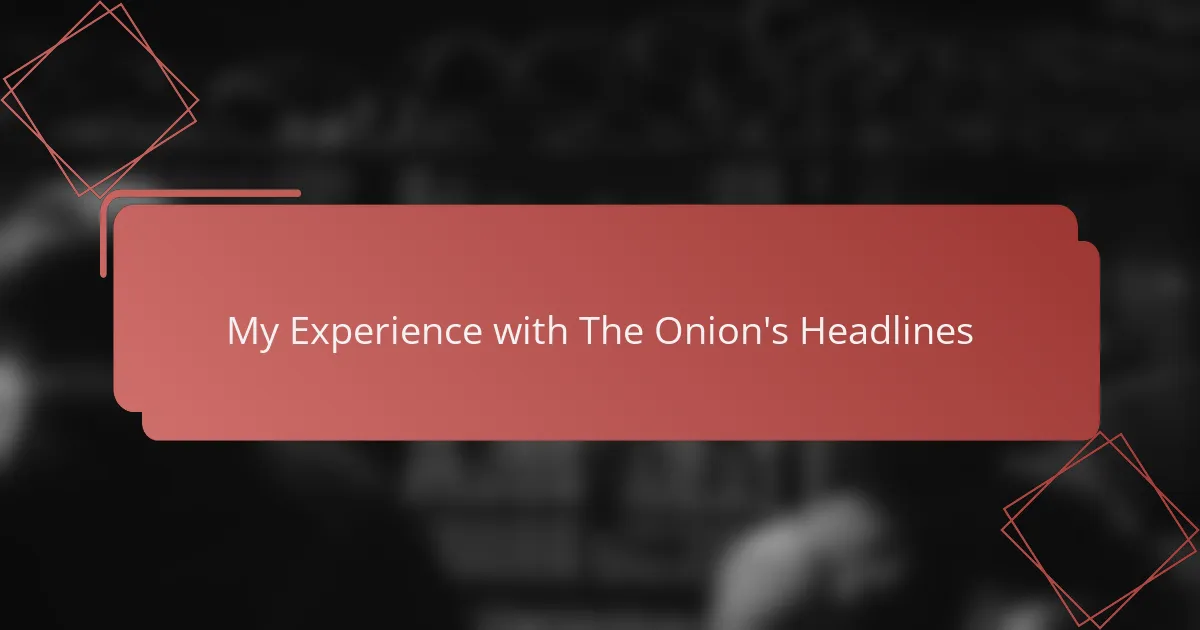Key takeaways
- Political satire, exemplified by Stephen Colbert, effectively uses humor to expose political hypocrisy and engage critical thinking.
- Key techniques include irony, exaggeration, and parody, which help convey complex issues in an accessible and entertaining format.
- Understanding the persona behind the satire enhances comprehension of the underlying critiques and societal reflections.
- Context and timing are crucial, as they determine the impact and relevance of satirical content in relation to current events.
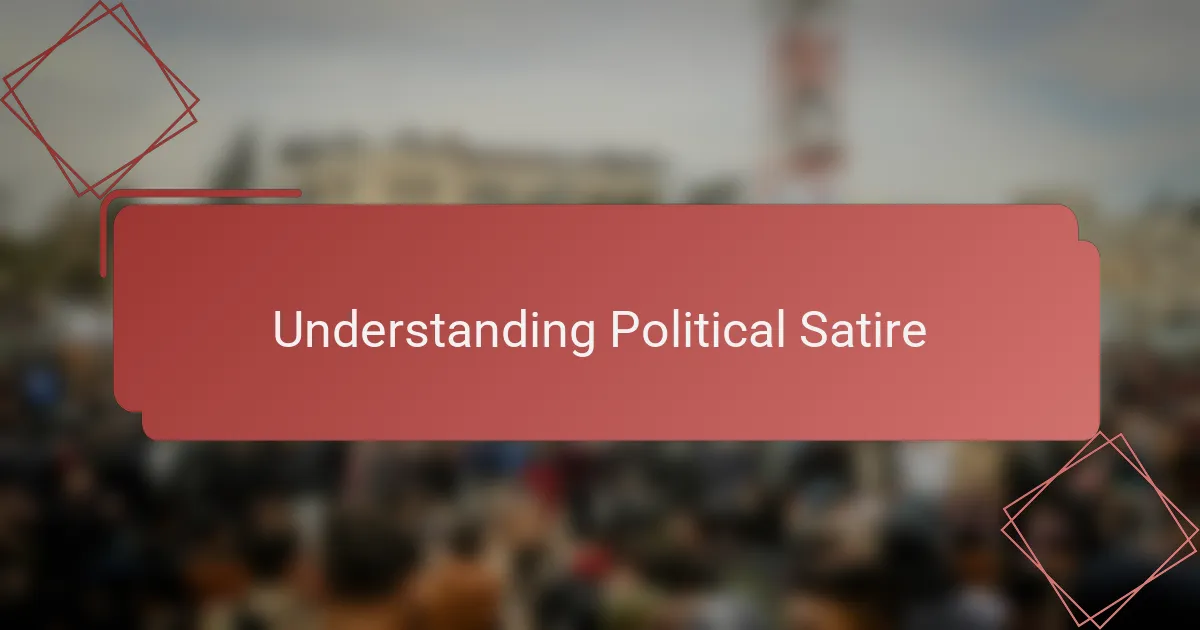
Understanding Political Satire
Understanding political satire requires a keen eye for how humor exposes the underlying truths of political events. I’ve found that Stephen Colbert’s genius lies in his ability to blend wit with criticism, making complex issues accessible and entertaining. His satire often feels like a conversation where laughter opens the door to reflection, challenging me to think beyond my initial reactions.
| Aspect | Political Satire Element |
|---|---|
| Purpose | Expose political hypocrisy and prompt reflection |
| Method | Use of irony, parody, and exaggeration |
| Emotional Impact | Engages through humor while provoking critical thought |
| Accessibility | Transforms complex political ideas into relatable content |
| Example | Colbert’s persona satirizes pundit culture to reveal media bias |
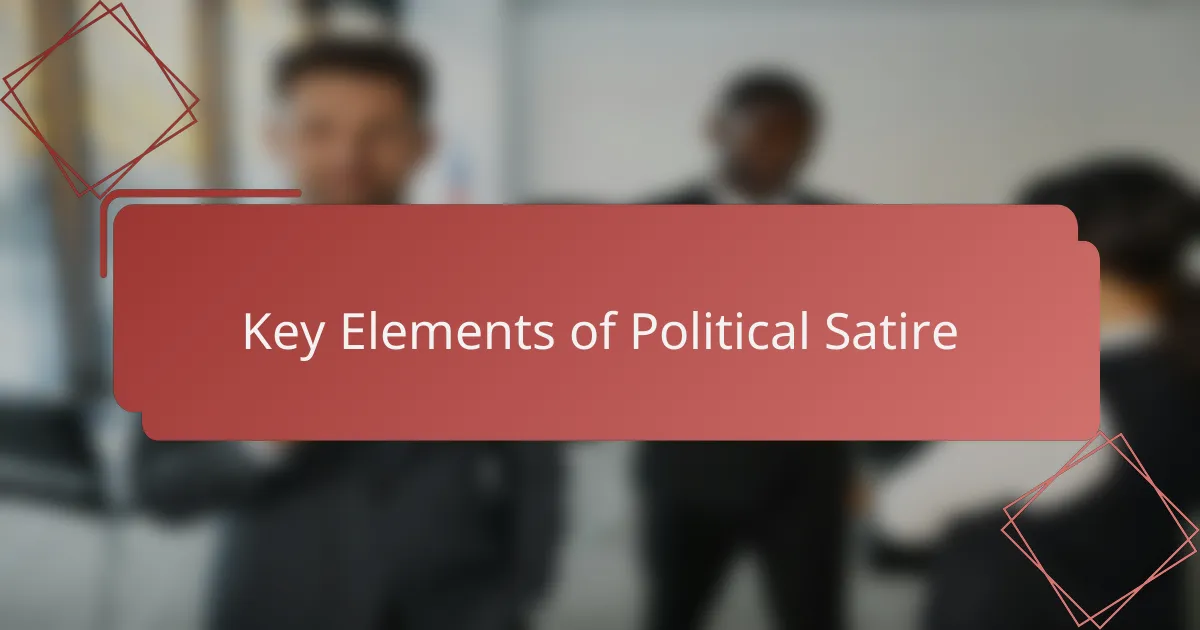
Key Elements of Political Satire
Political satire, especially in Stephen Colbert’s work, thrives on sharp wit and timely commentary. I noticed that his ability to blend humor with biting critique keeps the audience both entertained and thinking critically. It’s this balance that really draws me in and makes the satire resonate on a deeper level.
From my experience analyzing Colbert’s routines, certain key elements consistently stand out, shaping the effectiveness of his satire:
- Irony and sarcasm to highlight political contradictions
- Exaggeration to expose flaws and absurdities
- Use of parody to mimic and undermine political figures
- Timely references to current events for relevance
- Clever wordplay that engages the intellect and the humor sense
- A strong persona that amplifies the satire’s impact through character-driven delivery
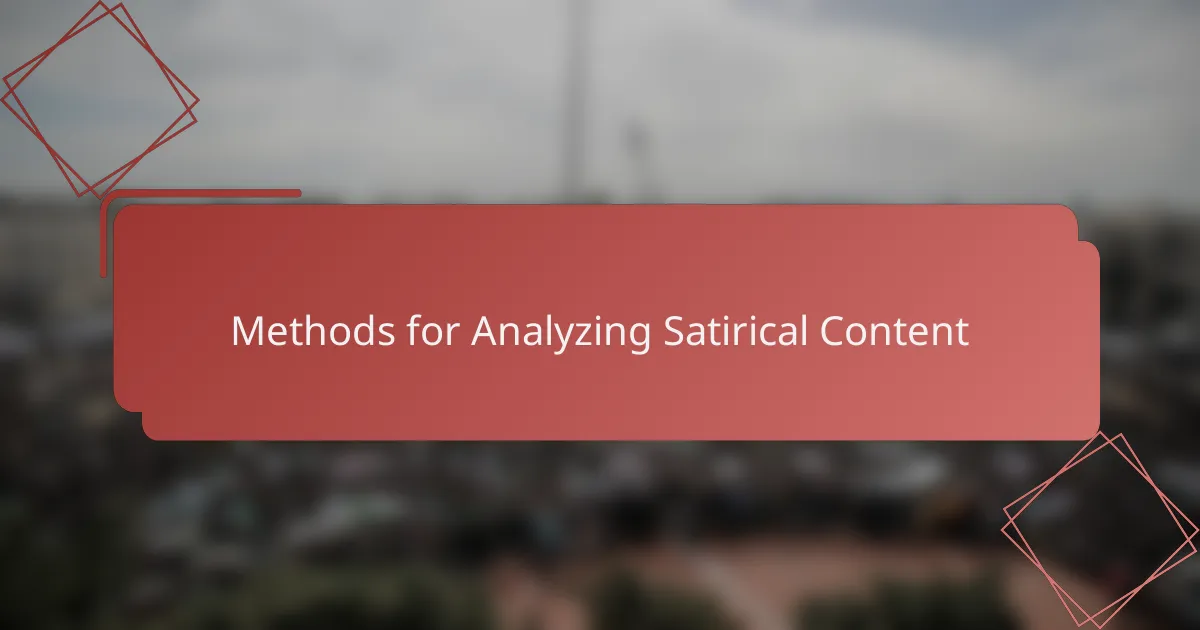
Methods for Analyzing Satirical Content
When I dive into analyzing satirical content, the first thing I focus on is how irony and exaggeration are used to expose contradictions. I ask myself, “What truth is being magnified beneath the humor?” This approach helps me uncover the subtle ways Colbert twists reality to provoke thought without outright stating his critique.
Another method that really resonates with me is examining the persona behind the satire. Colbert’s character isn’t just a gimmick; it shapes the entire message and tone. By dissecting how this persona reacts and interacts with political topics, I get a better sense of how satire works as both entertainment and sharp commentary.
I also pay close attention to timing and context. Satire often loses its bite if you miss the current events or cultural references it relies on. So, I keep myself informed about the political landscape during Colbert’s performances, which makes the satire hit closer to home and feel more immediate. Have you noticed how a joke lands differently depending on when and where it’s told? That’s the kind of nuance I look for in my analysis.
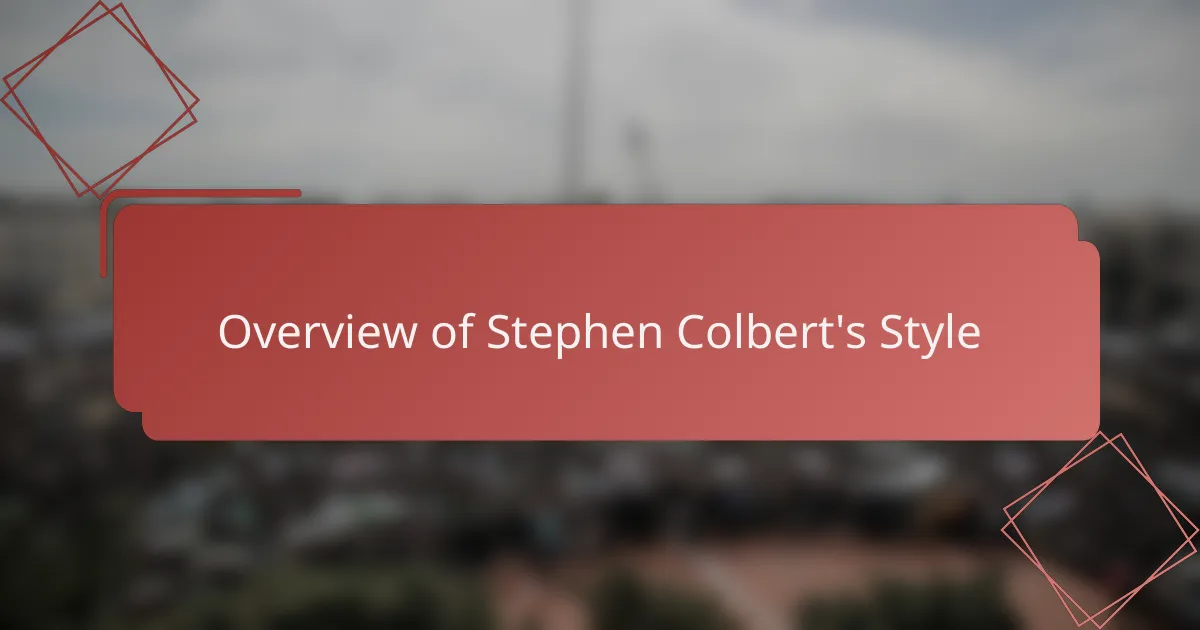
Overview of Stephen Colbert’s Style
Stephen Colbert’s style is unmistakably bold and cleverly layered, blending sharp wit with a subtle playfulness that keeps audiences both entertained and thinking. When I first tuned into his show, I was struck by how effortlessly he embodied his satirical persona, making political commentary feel like a masterclass in irony.
What stands out most to me is his use of exaggeration and irony to not just highlight political absurdities but to challenge viewers to question their own perspectives. Here are some key elements I noticed in his approach:
- Masterful use of irony to expose contradictions in political rhetoric
- A persona that exaggerates political stereotypes to reveal deeper truths
- Sharp, rapid-fire delivery that keeps the audience engaged and alert
- Skilled incorporation of current events to maintain relevance
- Engagement with guests that blends humor with serious political critique
- Use of absurdity to make complex issues accessible and memorable
Reflecting on these traits, I realize why Colbert’s satire resonates so deeply—it’s not just humor; it’s a call to think critically wrapped in laughter.
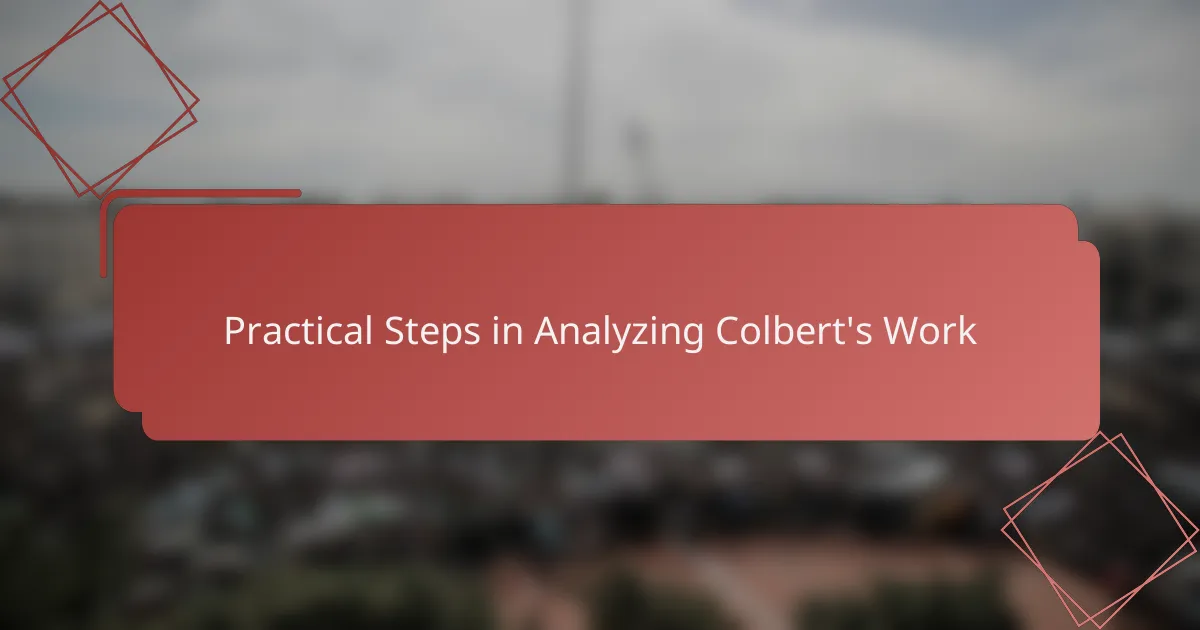
Practical Steps in Analyzing Colbert’s Work
First, I start by breaking down Colbert’s episodes scene by scene, paying close attention to how his persona interacts with political topics. I ask myself: What’s the subtext beneath that sarcastic comment? This step is crucial because it helps me decode the layered meanings that aren’t obvious at first glance.
Next, I focus on the specific satirical techniques he uses—like irony, exaggeration, and parody. For example, when Colbert amplifies a politician’s absurdity, I try to identify what real-world issue he’s highlighting through that exaggeration. It’s like peeling back an onion; each layer adds depth to the political critique.
Lastly, I make it a habit to check the timing of his jokes against current events. I’ve noticed that a Colbert punchline lands differently depending on the political climate, and understanding that context often reveals how sharp and deliberate his satire really is. Have you ever found yourself laughing and then suddenly realizing the deeper criticism behind the joke? That moment is what I aim to capture in my analysis.
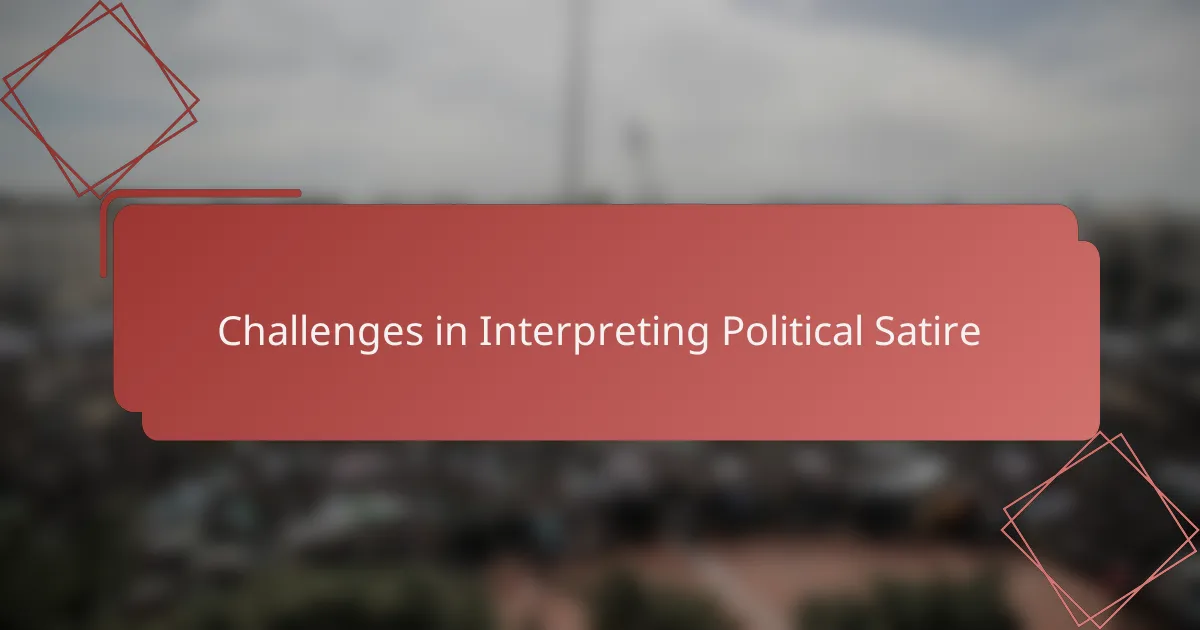
Challenges in Interpreting Political Satire
Interpreting political satire isn’t always straightforward. I’ve often caught myself chuckling at a Stephen Colbert joke, only to pause and wonder, “Wait, what exactly is he criticizing here?” That moment of confusion is where the challenge lies—satire thrives on nuance, and missing that subtlety can lead to misinterpretation or overlooking the deeper message.
Another tricky part is recognizing the persona’s role versus the actual political opinion being presented. I used to take Colbert’s words at face value until I realized his character is a deliberate exaggeration designed to spotlight absurdities. Decoding that persona feels like trying to read between the lines of a complex script, requiring patience and attention to the layers beneath the humor.
Timing also adds a layer of complexity. I remember watching an old clip without knowing much about the political climate at the time, and much of the satire flew over my head. It made me realize how crucial context is—without it, even the sharpest satire can seem like just another joke. Have you ever experienced that disconnect? It’s a challenge that keeps the analysis both fascinating and frustrating.
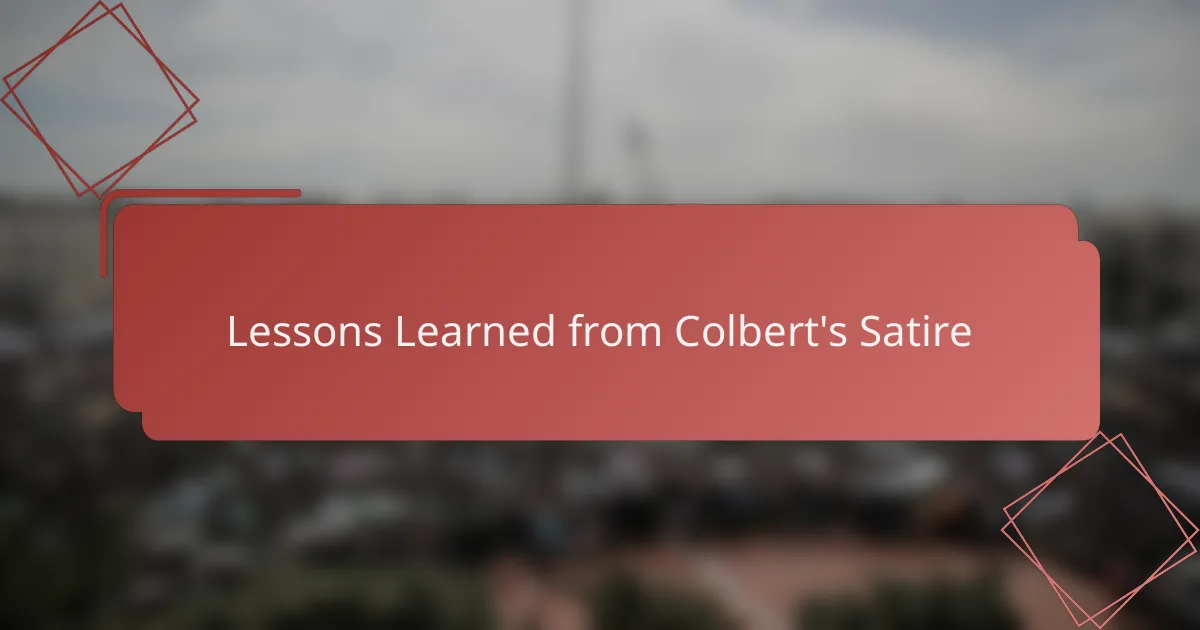
Lessons Learned from Colbert’s Satire
What I’ve truly learned from Colbert’s satire is that humor can be a powerful tool for exposing uncomfortable truths. It’s not just about making people laugh; it’s about pushing them to question what they think they know. Have you ever found yourself chuckling along and then suddenly realizing you’ve been invited to rethink your assumptions? That’s the magic of Colbert’s approach.
Another lesson I took away is the importance of persona in satire. Colbert’s character isn’t merely for entertainment—it’s a strategic lens that magnifies political absurdities in a way straightforward commentary can’t achieve. I’ve come to appreciate how embodying a character allows the satire to strike harder, inviting audiences to see hypocrisy and bias reflected back with a sharper edge.
Lastly, timing and context are lessons that have reshaped how I watch political satire. I’ve noticed that without being tuned into the political moment, much of the nuance just slips by. When I catch a Colbert segment in its original context, the layers of irony and parody come alive, making the satire not only funnier but more meaningful. Don’t you find that understanding the “when” behind the joke changes everything?
